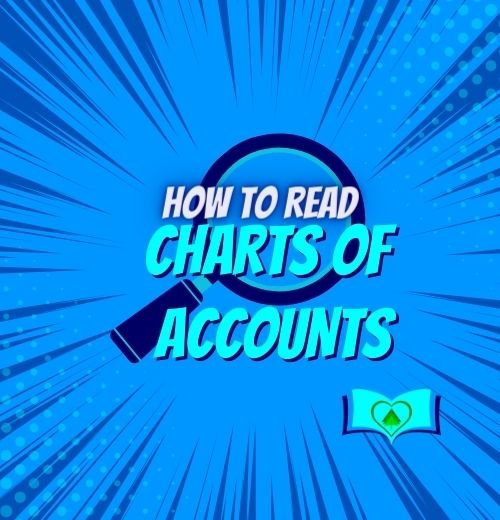How To Read Your Chart Of Accounts
Every time you record a financial transaction for your nonprofit organization—a new grant received, a donation from a supporter, expenses for a fundraising event—you need to ensure it is recorded in the appropriate account.
But how do you determine which account to use? The chart of accounts for nonprofits is here to help!
Let’s explore what the chart of accounts is, its structure, and why it plays a vital role in managing your nonprofit’s finances.
What is the chart of accounts?
The chart of accounts is a comprehensive list of all the financial accounts used by your nonprofit organization. It provides a systematic overview of every aspect of your organization’s financial activities. The main account types include Revenue, Expenses, Assets, Liabilities, and Net Assets.
Different nonprofits may have variations in their charts of accounts based on their specific activities and reporting needs. For instance, an environmental conservation nonprofit may have accounts related to habitat restoration, while a community center may have accounts for recreational programs.
The chart of accounts reflects the financial landscape of your nonprofit by showcasing the accounts involved in its day-to-day operations.
Sample Chart of Accounts
Here’s a partial example of a chart of accounts for a fictional nonprofit: Harmony Garden Foundation.
Chart of Accounts
As you can see, each account corresponds to specific financial statements such as the Statement of Financial Position (balance sheet) and Statement of Activities (income statement). Let’s understand their significance.
The balance sheet accounts
These accounts are essential for creating your nonprofit’s balance sheet, a key financial statement. There are three types of balance sheet accounts:
Asset accounts track the resources owned by your nonprofit that hold value. They include cash, investments, property, and equipment.
Liability accounts record the obligations and debts owed by your nonprofit. Examples include accounts payable, accrued expenses, and loans.
Net Assets accounts represent the nonprofit’s equity or value created since the organization began operations. These accounts capture the organization’s financial health and include unrestricted and restricted net assets.
The income statement accounts
Income statement accounts help generate another important financial statement: the income statement or statement of activities.
Revenue accounts capture the income generated by your nonprofit from various sources such as grants, donations, membership fees, and program fees.
Expense accounts track the costs incurred by your nonprofit while carrying out its mission. These can include program expenses, fundraising costs, administrative expenses, and overhead costs.
Understanding how balance sheet and income statement accounts interact is essential. Keep in mind that revenue increases net assets, while expenses decrease them.
Why is the chart of accounts important?
The chart of accounts acts as a roadmap, guiding you through the financial terrain of your nonprofit.
A well-designed chart of accounts helps you categorize transactions accurately, make informed decisions, assess your nonprofit’s financial position, and comply with financial reporting standards.
By providing a clear structure, it ensures consistency in financial recording and reporting, allowing you to monitor your nonprofit’s financial health effectively.
Need to make adjustments to your chart of accounts?
If you need to make changes to your chart of accounts, remember a simple rule: you can add accounts at any time, but it’s often best to wait until the end of the year to remove or delete old accounts. Deleting an account in the middle of the year can cause complications in your financial records.
For instance, if your nonprofit realizes halfway through the year that it needs a separate account for a specific program’s expenses, you can add a new account to the chart of accounts. You then have to consider making adjusting entries to transfer the related expenses from the existing account to the new one.
Maintaining accuracy and consistency in your chart of accounts ensures reliable financial information for your nonprofit’s decision-making and reporting.
Remember, while it’s important to maintain a sustainable approach, accurately interpreting and managing your nonprofit’s chart of accounts is crucial for maintaining financial stability and achieving your organization’s mission


